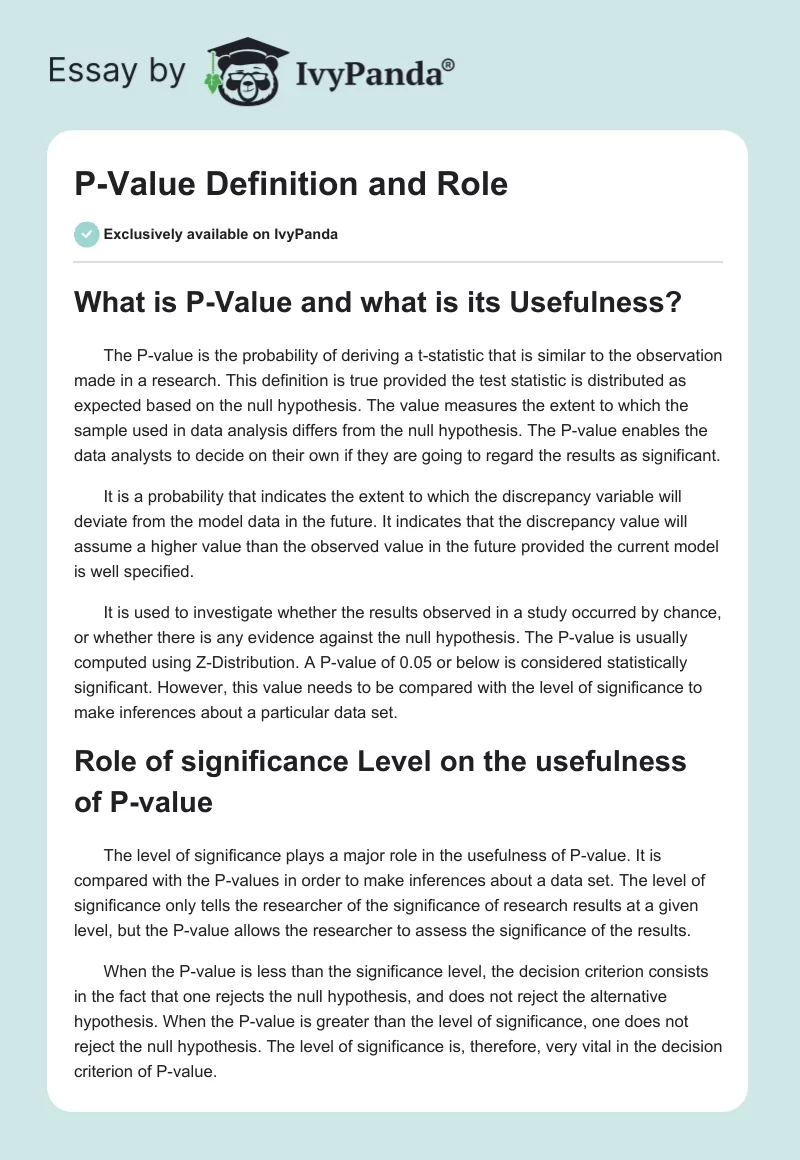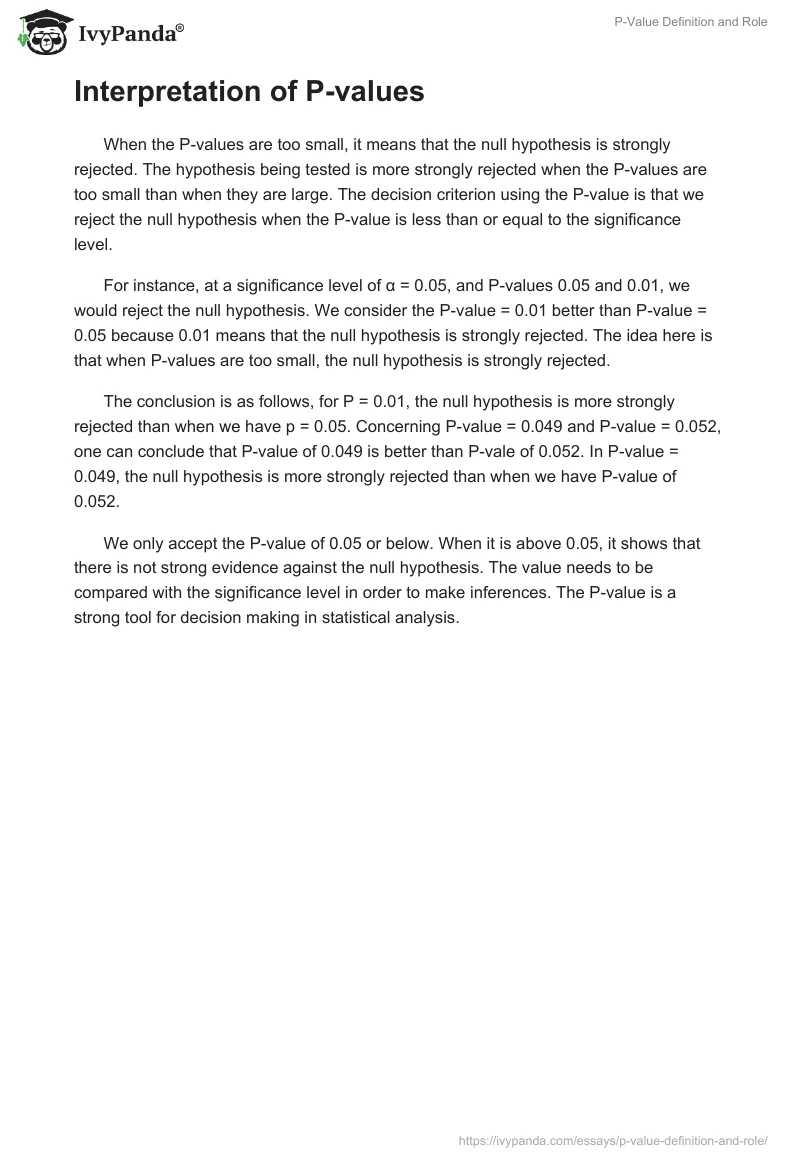What is P-Value and what is its Usefulness?
The P-value is the probability of deriving a t-statistic that is similar to the observation made in a research. This definition is true provided the test statistic is distributed as expected based on the null hypothesis. The value measures the extent to which the sample used in data analysis differs from the null hypothesis. The P-value enables the data analysts to decide on their own if they are going to regard the results as significant.
It is a probability that indicates the extent to which the discrepancy variable will deviate from the model data in the future. It indicates that the discrepancy value will assume a higher value than the observed value in the future provided the current model is well specified.
It is used to investigate whether the results observed in a study occurred by chance, or whether there is any evidence against the null hypothesis. The P-value is usually computed using Z-Distribution. A P-value of 0.05 or below is considered statistically significant. However, this value needs to be compared with the level of significance to make inferences about a particular data set.
Role of significance Level on the usefulness of P-value
The level of significance plays a major role in the usefulness of P-value. It is compared with the P-values in order to make inferences about a data set. The level of significance only tells the researcher of the significance of research results at a given level, but the P-value allows the researcher to assess the significance of the results.
When the P-value is less than the significance level, the decision criterion consists in the fact that one rejects the null hypothesis, and does not reject the alternative hypothesis. When the P-value is greater than the level of significance, one does not reject the null hypothesis. The level of significance is, therefore, very vital in the decision criterion of P-value.
Interpretation of P-values
When the P-values are too small, it means that the null hypothesis is strongly rejected. The hypothesis being tested is more strongly rejected when the P-values are too small than when they are large. The decision criterion using the P-value is that we reject the null hypothesis when the P-value is less than or equal to the significance level.
For instance, at a significance level of α = 0.05, and P-values 0.05 and 0.01, we would reject the null hypothesis. We consider the P-value = 0.01 better than P-value = 0.05 because 0.01 means that the null hypothesis is strongly rejected. The idea here is that when P-values are too small, the null hypothesis is strongly rejected.
The conclusion is as follows, for P = 0.01, the null hypothesis is more strongly rejected than when we have p = 0.05. Concerning P-value = 0.049 and P-value = 0.052, one can conclude that P-value of 0.049 is better than P-vale of 0.052. In P-value = 0.049, the null hypothesis is more strongly rejected than when we have P-value of 0.052.
We only accept the P-value of 0.05 or below. When it is above 0.05, it shows that there is not strong evidence against the null hypothesis. The value needs to be compared with the significance level in order to make inferences. The P-value is a strong tool for decision making in statistical analysis.


